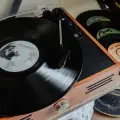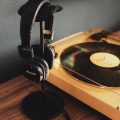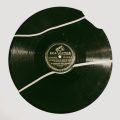Do you want to know precisely what a preamp for turntables is? Do you know if you need one or not? Does your turntable already have one?
All of this and more on today’s episode of Notes on Vinyl, as we take you through the ins and outs of the preamp as used for a turntable. We will also discuss why it is necessary, and whether or not you might need to start saving up for one.
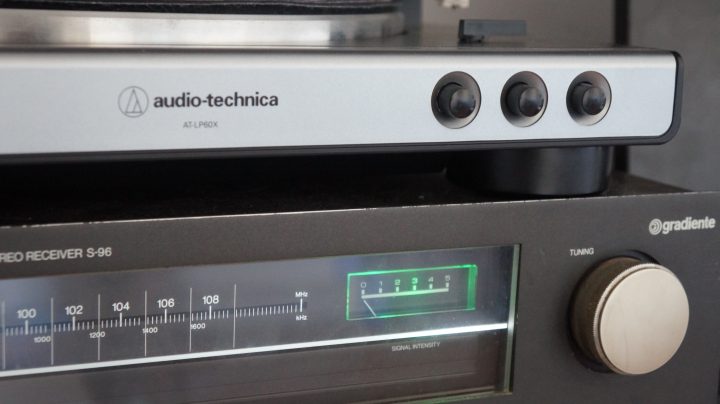
What Is a Preamp?
A preamp is a device you can find installed in different kinds of audio equipment. Even if you know all about turntables and record players, you might still be none the wiser about what exactly a preamp is. Sure, we can hear the terms phono preamp or phono stage relentlessly in these kinds of forums. But how are we supposed to understand how important are phono preamps without a little background?
Some of the most seasoned audiophiles are even unaware of the existence of the turntable preamp. The phono stages of an amp are essentially there to amplify the raw phono signal of the turntable to a higher volume so that it can be received by the entire audio system as it would receive other types of audio sources.
This raw signal is otherwise rather quiet. Thus, a little boost from a pre-amp is essential to preserve sound quality. Now, this can be a built-in preamp or an external preamp. But it better be a good one if you want your sound system to do justice to the audio signal.
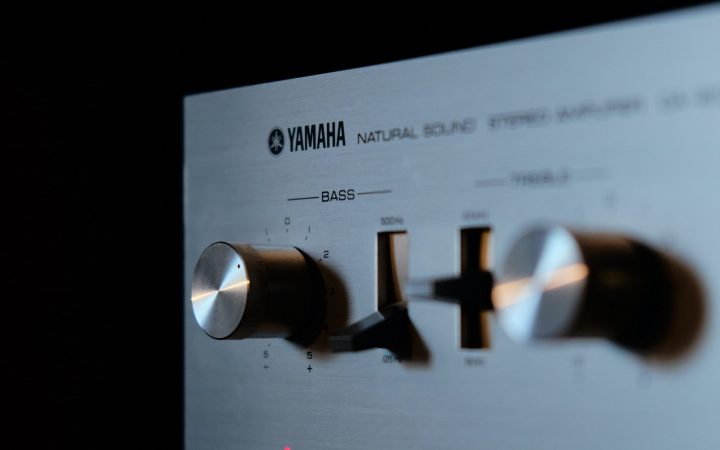
The best phono preamps actually have a dual purpose. While they focus on boosting the signal, it is also important to concentrate on RIAA equalization.
It is all well and good simply amplifying the raw signal until it is louder. But what is to happen to the equalization of the signal?
Quality turntable preamps will seek to preserve the precise curve of the equalization of the raw phono input once its signal has been boosted enough to be heard by the main stereo system.
This is obviously a rather complex matter, but you can learn a little more about it here:
How Does a Preamp Work?
A preamp adds a gain of some sort to the signal so that it can be received by the amplifier and/or receiver and then projected forth through them and the speakers.
The amount of gain added is quite astronomical sometimes. It is difficult to overestimate how quiet that raw phono signal is! You might be asking how this can be the case when the turntable is already receiving power from the mains. Can this funnel into the signal?
Actually, all of this power is already being applied to the spinning of the platter. This is, in fact, the only thing that the power from the wall socket is doing for a turntable. And why it is so important to have a strong and steady electrical current.
Sure, the stylus generates a signal itself from the grooves of the record. This signal is then converted via the cartridge to an electrical signal. This signal is, however, very weak, and has an incredibly low output of 4 mv.
Compared to CD players and other media, this is almost laughable. So the preamp needs to boost the signal to 300 mv – a gargantuan feat, all things considered. Thus, it should not be hard to see just how integral a good phono preamp is in converting those weak phono signals into the sweet sounds of your favorite tunes.
Thankfully, it has never been easier and cheaper to buy a preamp. This device will not only serve you well and bring to life your favorite music. It is also not going to cripple your finances.
How to Tell Whether You Have a Preamp
There is a trend to include the preamp within the inner mechanisms of the turntable itself. This is more often the case for the best turntables under $500, such as the Audio-Technica AT-LP60, for example.
It can, however, sometimes be hard to tell whether your own turntable has come with its own preamp built into it. If, for example, you have a more obscure model that you picked up second-hand, then you might be at a loss for how to tell.
Anyone can tell, though. Simply connect your turntable to the main phono amplifier and listen to the signal. If you can hear the signal at a reasonable volume with no distortion, then chances are you have a preamp built-in.
If not, then you might need to invest in a separate preamp. Thankfully, there has never been a better time to buy a reasonably priced preamp.
Look More Closely…
The realm of the built-in preamp is not just reserved for the turntable itself. There are plenty of models of amplifiers and receivers that also have their own preamps built into the mechanism.
As a general rule of thumb, you can safely assume that a vintage amp or receiver from before the 80s is likely going to have a preamp built into it. If, however, you are unsure, then you can always check around the back of the amplifier itself.
If there is a label that says phono that features a ground screw next to it, then chances are there is indeed a preamp. This can be a little misleading. Because there are plenty of newer models of amplifiers or receivers that do not come with preamps but still feature the ‘phono’ label on the back.
In this case, you can always use the aforementioned trick to determine the presence of a preamp. Here, you will plug in your turntable again and crank up the volume to a pretty ridiculous level. If there are no obvious signs of distortion at such a volume, then you can safely assume that there is a phono stage built in.
You will have to use your own head and ears for this one, to trust in your own instincts and hearing ability.
Powered Speakers
On top of all this, we must consider the presence of powered speakers on the market today. This is certainly a very current issue, and we cannot understate its importance.
You can use these kinds of speakers for a whole host of purposes. Though, today, we are using them as speakers for turntables.
This might not seem like a big deal. Surely you can use any speakers for turntables. What is the big deal? Well, the fact that the best-powered speakers for turntables are powered means that they can altogether elide the amplifier and preamplifier of the entire stereo system.
This means that, via the RCA inputs, they can be hooked directly up to the turntable without any sort of intermediary getting in the way. Some are, in fact, even equipped with a preamp inside. This means that there is still no real need for an intermediary, even if the turntable in question does not have its own preamp built-in.
This surely seems an incredibly significant moment in the world of audiophilia! Such a motion negates and almost invalidates two of the central aspects of the stereo equilibrium.
In the future, this could mean big things and big changes for the audiophile. There might be a temptation to purchase a very good turntable and pair of powered speakers instead of you investing a whole bunch of money in the whole home setup. Lots to think about, regardless.
What Kind of Preamp?
There are, in fact, at least a few different types of preamps to consider before purchasing your own. Below, you will find a list of the most commonly used preamps.
Moving Coil Preamp
The moving coil preamp is by far the more popular of the two main options. It places itself firmly in the former camp of the great divide between moving coil vs moving magnet phono cartridges. The main reason for this popularity seems to have something to do with the fact of its slow-moving mass, which supposedly allows it to reach a higher frequency.
This is supposed to generate a lower impedance which, in turn, results in a lower chance of Radio Frequency Interference (RFI).
Also, there is more stress in the coils than in their moving magnet counterpart. This also provides a lower output of 0.5 mv (millivolts). Moreover, there are fewer coil windings despite the much higher price tag. For example, the cartridge detailed above by Audio-Technica is going for $1500.
This low output actually has some pretty real consequences, resulting in mishaps in the bass frequencies. These kinds of preamps require at least ten times more gain in the heart compared to their moving magnet brethren. This is something that almost seems to negate the idea of them being amplifiers of the weak phono signal in the first place.
This makes them almost seem like a liability, something that you definitely do not want in your system!
Moving Magnet Preamp
So, on the other side of the MM / MC battle between magnet cartridges and coil cartridges, we have the moving magnet preamp.
By comparison, the output of the moving magnet preamp is ten times the amount of its moving coil counterpart, coming out at 5 millivolts.
Because of this, the preamp itself requires far less gain in the first instance and, on a kind of unrelated note, costs far less. The cartridge above costs about a third of the price of the other Audio-Technica cartridge above.
However, the sound quality takes a serious dive in the moving magnet preamp. This is certainly something that will be more important to those with a more discerning ear. I think, considering the price, the dip in sound quality is more than understandable.
Some Examples of Preamps
Let us put all we have learned so far into the context of actual preamps, shall we? Below, we have compiled a list of the best preamp for turntables.
Pyle Phono Turntable Preamp
Pyle has managed to stuff all the utterly necessary elements of a phono preamp into a very small and affordable package. This will be ideal for those working within the harsh confines of a strict budget.
The budget aspect of this preamp is definitely worth your attention. Sure enough, it is incredibly affordable. But I would recommend this preamp if you really do not have any other choice. The sound quality on display here is far below some of the others on this list. In fact, if you already have a preamp built into your all-in-one record player or turntable, you would do best to use this rather than fork out the money for a new one.
If you do need to spend very little, then you cannot really do much better than the Pyle in terms of value. The Pyle, indeed, lives to serve and will humbly do your bidding.
The low price point is because of the utter simplicity of the preamp. Lacking in knobs, buttons, or switches of any kind. Rather, there are just phono inputs on one side and phono outputs on the opposite. Moreover, there is a ground screw and a power supply input.
So, if you find the huge number of choices in life overwhelming, you really cannot go wrong with this fine vessel. Unless you are a rampant audiophile, of course.
Cambridge Audio Alva Duo
While often oblique and uselessly named, Cambridge Audio has named the Alva Duo very helpfully, the Duo. It is designed to accommodate both moving magnet and moving coil cartridges.
This is, however, not the only reason that the Duo is named thus. Rather, it is also because it doubles as a unique and capable headphone amplifier. It sends the incoming signal from the record and amplifies it enough to be heard by headphones.
The compatibility between cartridges is something you may covet at all costs in this price range. So added atop the fact that it doubles as a fantastic headphone amplifier, this really is a preamp worthy of note.
The incredibly sleek and simple design is an exemplar of the kind of attention to detail that this preamp has. Rejecting room noise by making the circuit board surface-mounted, reducing hum and extraneous vibrations from all around.
Specific to this preamp is the so-called subsonic filter. This is a feature that seeks to make older records sound better. It can also help to reduce low-frequency rumbling and sounds from the surrounding environment.
Pro-Ject Phono Box S2 Ultra
Besides excelling in the world of preamps, Pro-Ject is also adept at designing and manufacturing turntables. Something that they have exhibited with their incredibly successful Pro-Ject 1. This turntable took the audiophile by storm, and they have since grown a considerable reputation as being one of the best to offer such high-quality turntables below $1000.
This extends to their production of preamps, of course, whose appearance very much mirrors the minimal beauty of their matte brutalist turntables. For those looking to pair their minimal home aesthetic with something equally befitting, then look no further!
Though the colors are bold and the construction is metal-cased and sturdy, the real selling point here is the supreme audio quality that this thing delivers and that you are going to be able to depend upon.
This is simply a product that works. And, thus, the manufacturer has seen it fit not to burden the user with a bunch of knobs and switches that might get in the way of a listening experience. Rather, this is just a box that makes the records sound good.
Final Tones
So, there you have it!
Hopefully, this light expression of the preamp for turntables has been of some use to you! If you want to buy a preamp but find it too expensive, you can look for some of the best phono preamps for under $500.
FAQs Preamp for Turntable
Do turntables need a preamp?
More or less, yes, turntables need a preamp. However, this will depend on the kind of turntable you own. Some are blessed enough to come with a preamp already built-in. Others, however, have a preamp built in that does not fit with the specific needs and wants of the owner. In this case, a new preamp will be needed.
What does a preamp do for a turntable?
The pure phono signal from a record and the cartridge is simply not loud enough. If amplified to the correct volume, the signal would distort beyond recognition. Thus, a preamp does precisely what it says on the tin, pre-amplifying the signal before sending it off to the amplifier and/or receiver properly. In this way, the signal is prepared to be amplified and can therefore be dealt with so that it is transmitted as accurately as possible.
Will a preamp make my turntable sound better?
More or less, yes, a preamp will make your turntable sound better. Though this will depend on the kind of preamp you are going to use. Though you might argue that just about any preamp is going to improve upon the raw phono signal, there are gradations to these things. A cheaper preamp is not exactly going to sound much better than just pumping that pure signal into an amplifier. A more expensive preamp, on the other hand, will seriously do the sound of the turntable some favors.
How do I choose a preamp for my record player?
One of the main factors to take into account when purchasing a preamp for your own turntable is the budget. This will determine just how much you invest in the preamp and, thus, how good it is going to sound. If you are willing to fork out a considerable sum, then you can easily come across a preamp that is going to bring your favorite records to life.
Is a phono stage the same as a preamp?
More or less, yes, a phono stage is the same as a preamp. Though they do have different meanings if you want to get into the specifics. The phono stage is more or less going to always refer to the part of a turntable dealing with that raw phono signal and its conversion into other things. A preamp can, however, refer to other kinds of pre-amplification besides that to do with phono stages and turntables.









